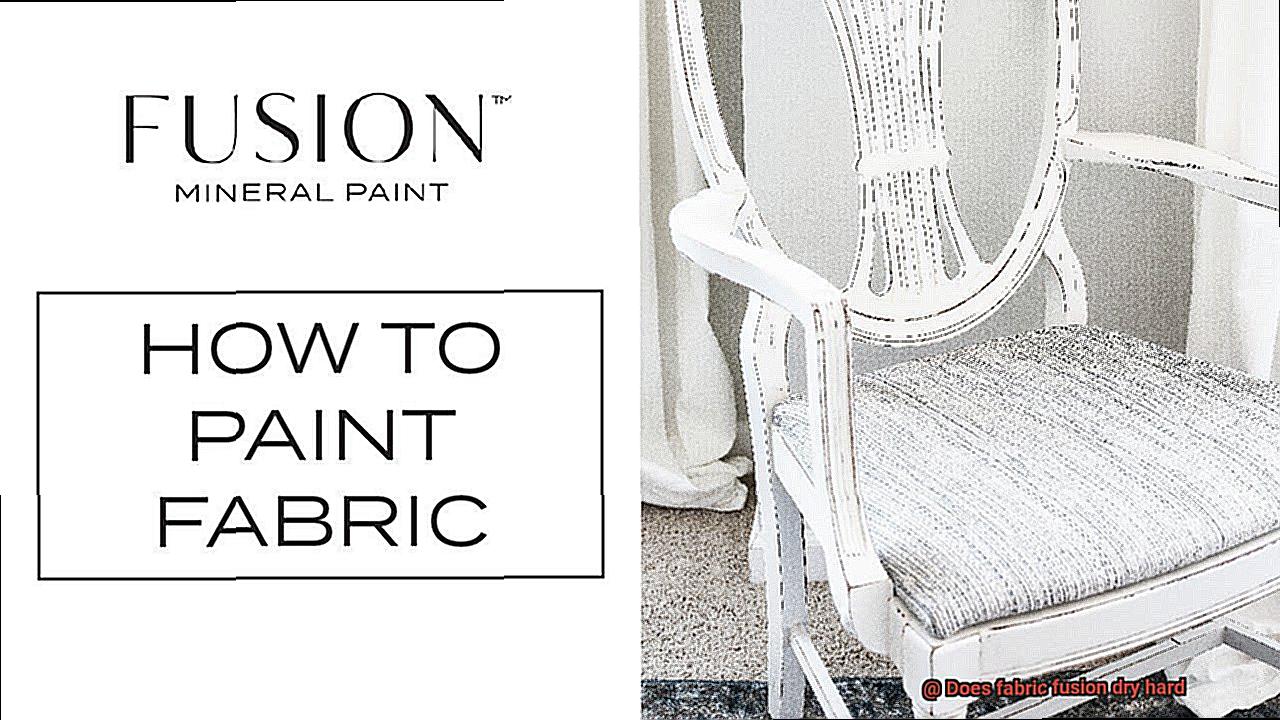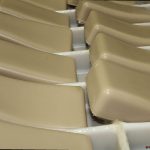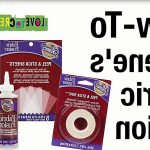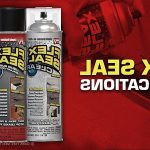Curious about what happens when you use fabric fusion on your favorite materials? Today, we’re exploring the world of fabric fusion and how it affects your textiles.
One big question people always ask is whether fabric fusion dries hard, changing the texture and stiffness. Whether you’re a pro crafter or just starting out in the DIY game, knowing how fabric fusion impacts the feel of your fabrics is super important.
So, let’s unravel the secrets of fabric fusion and find out if it leaves a stiff finish or keeps that softness we all adore.
What is Fabric Fusion?
Contents
Embarking on a crafting or sewing journey often introduces us to the term “fabric fusion.” But what exactly is fabric fusion, and how does it work? This ultimate guide will delve into the world of fabric fusion, exploring its purpose, uses, and all the nitty-gritty details you need to know.
What is Fabric Fusion?
Fabric fusion is a specialized adhesive explicitly designed to bond fabric together. It comes in various forms, such as liquid glue or adhesive tape. With its remarkable strength and durability, fabric fusion has become a go-to choice for both professional seamstresses and DIY enthusiasts.
Versatility at Its Finest:
Fabric fusion’s standout feature lies in its versatility. It effortlessly bonds various fabrics, from sturdy denim and cotton to delicate silk and lace. This adaptability makes it an essential tool for any sewing or crafting project.
Easy Application:
Using fabric fusion is a breeze. Apply the adhesive directly onto the fabric surfaces you want to bond together. Ensure even distribution and avoid excessive amounts that may seep through or leave visible residue.
Quick Drying Time:
Unlike traditional sewing methods that demand patience, fabric fusion offers instant bonding. Apply the adhesive, press the fabric pieces firmly together, and you’re good to go. No need to wait for stitches or seams to set – saving you valuable time and making your projects more efficient.
Flexibility Matters:
Fabric fusion’s significant advantage lies in its ability to create flexible bonds. Unlike other adhesives that dry hard and stiff, fabric fusion retains the fabric’s flexibility even after drying. This ensures comfortable wearability and freedom of movement in garments or accessories made with this adhesive.
Factors to Consider:
While fabric fusion generally dries with a flexible finish, it’s crucial to note that different brands and formulations may affect the hardness of the dried adhesive. Additionally, factors like the amount of adhesive used and the type of fabric being bonded can also influence the final texture.
Does Fabric Fusion Dry Hard?
Fabric fusion, a beloved adhesive among crafters and seamstresses, is renowned for its ability to create a strong bond between fabrics while remaining soft and flexible even after drying. In this article, we’ll delve into the science behind fabric fusion and explore why it retains its flexibility, providing you with a comprehensive understanding of this remarkable adhesive.
The Science Behind Fabric Fusion:
Fabric fusion’s unique formulation enables it to penetrate the fibers of the fabric, creating a resilient bond that can withstand stress and movement. Unlike other adhesives that dry hard and rigid, fabric fusion’s special composition allows it to maintain its flexibility.
Flexibility for Functional Fabrics:
Fabrics, particularly those used in garments and accessories, are constantly subjected to bending, stretching, and movement. If the adhesive were to dry hard, it would easily crack or break apart when the fabric flexes. However, fabric fusion’s flexibility allows it to move and stretch with the fabric, ensuring the bond remains intact. This quality is especially crucial for functional fabrics like activewear or stretchy materials.
Transparent and Practical:
In addition to its flexibility, fabric fusion boasts another advantage: it dries transparently. This makes it perfect for bonding delicate or light-colored fabrics without leaving any visible marks or stains. Furthermore, fabric fusion is often machine washable and dry cleanable, adding convenience and practicality to your projects.
Minimal Stiffness for Maximum Durability:
While fabric fusion doesn’t dry hard, it does dry to a certain level of stiffness. This stiffness is necessary to secure a strong and durable bond between fabrics. However, rest assured that the stiffness is minimal and won’t compromise the overall flexibility and softness of the fabric.
Benefits of Flexibility in Fabric Fusion
Today, we embark on a thrilling journey through the enchanting realm of fabric fusion, where we unravel one of its most coveted qualities – flexibility. Imagine a glue that flawlessly bonds fabrics together while allowing them to move and breathe with ease. It may sound like a dream, but flexible fabric fusion has transformed this dream into reality. So, roll up your sleeves and prepare to discover the extraordinary benefits that flexibility brings to fabric fusion.
Comfortable Movement:
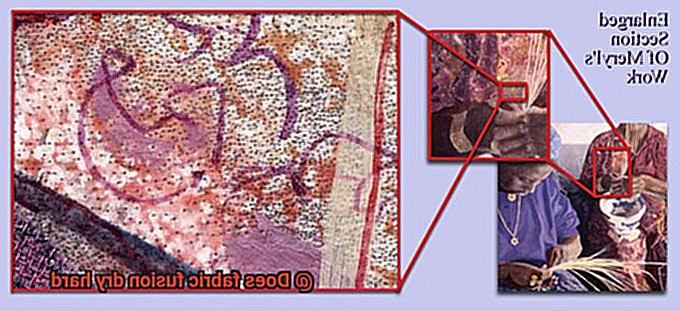
Envision slipping into your favorite garment, only to be met with stiffness and restriction. No thank you. With flexibility in fabric fusion, you can bid farewell to such discomfort. This remarkable quality ensures that your creations move harmoniously with you, facilitating natural and comfortable movement. Whether it’s a flowing dress or a stretchy headband, every fabric fusion project becomes an extension of you, effortlessly adapting to your every motion.
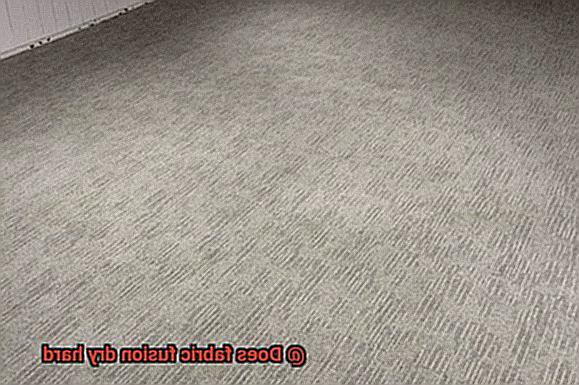
Durability:
We all yearn for creations that withstand the test of time, don’t we? Behold the power of flexible fabric fusion. Its pliability grants it the ability to endure the daily wear and tear of life without weakening or breaking. Go ahead – wash, stretch, bend – your fabric fusion masterpiece will remain unyielding and ready for any adventure that awaits.
Easy Repairs and Alterations:
Oops. Made a minuscule mistake or need to tweak your project? Fear not. Flexible fabric fusion transforms repairs and alterations into a seamless endeavor. It gracefully accommodates changes without compromising the integrity of both the fabric and adhesive, ensuring flawless fixes every single time.
Enhanced Aesthetics:
Let’s delve into the realm of appearances because we all yearn for creations that exude flawless beauty. Unlike rigid adhesives that create an unsightly contrast against the softness of fabrics, flexible fabric fusion seamlessly merges with its companions. The result? A polished and professional finish that will undoubtedly turn heads and ignite admiration.
Improved Adhesion:
Fabric diversity knows no bounds, with each fabric possessing its own unique characteristics. Some stretch more than others, while others dance with whimsical movement. Fear not. Flexible fabric fusion effortlessly adapts to these variations, creating a bond that can withstand the distinctive demands of different fabrics. Bid farewell to worries about adhesive failures, for flexibility conquers them all.
Unleash Your Creativity:
Calling all crafters and artists. With flexibility in fabric fusion, the shackles of creative limitation crumble away. Shape, mold, and experiment to your heart’s content, for the pliability of this adhesive opens the gates to infinite possibilities in your crafting and design endeavors. Imagination is your only restriction as you breathe life into your creations with unparalleled freedom.
Drying Time and Adhesive Brand Considerations
Unlocking the Secrets of Fabric Fusion: Drying Time and Adhesive Brand Considerations
Introduction:
Welcome back, crafters. Today, we’re diving deep into the world of fabric fusion adhesive and exploring the importance of considering drying time and adhesive brand. So grab your glue guns and let’s embark on this creative journey together.
Drying Time: Patience is Key
When it comes to fabric fusion, timing is everything. Different adhesive brands have varying drying times, so it’s crucial to follow the manufacturer’s instructions. Picture this: you’ve painstakingly bonded two fabrics together, only to discover that the adhesive hasn’t fully dried, resulting in a weak bond that won’t stand the test of time. Avoid this disappointment by checking the label or product description to determine the expected drying time.
Factors Affecting Drying Time
Several factors can influence how long fabric fusion adhesives take to dry. The type of fabric being used, climate conditions, and specific adhesive brand all play a role. For example, some adhesives may dry within minutes, making them perfect for quick projects. Others may require a few hours or even longer, allowing for a stronger and more durable bond.
Choosing the Right Adhesive Brand
With countless options available, choosing the right adhesive brand can be overwhelming. To make an informed decision, consider reading reviews and seeking recommendations from experienced crafters who have already explored the realm of fabric fusion. Remember, not all fabric fusion adhesives are created equal. Some brands offer formulas that dry hard and stiff, providing a rigid bond ideal for heavy-duty projects like attaching patches or appliques to garments. Others offer more flexible or soft bonds, ensuring fabrics retain their natural drape and movement.
Specialized Formulas for Specific Needs
Beyond drying time and flexibility considerations, some adhesive brands offer specialized formulas tailored to specific fabric types or applications. For delicate fabrics or waterproof bonding needs, there are adhesives designed with those requirements in mind. By selecting an adhesive brand that suits your project’s needs, you’ll achieve a successful and long-lasting bond.
Conclusion:
Crafters, as you embark on your fabric fusion adventures, remember to consider drying time and adhesive brand. By following the manufacturer’s instructions, choosing a reliable brand, and considering specialized formulas, you’ll ensure your creations stand the test of time. So go forth, create with confidence, and let the magic of fabric fusion bring your visions to life.
Proper Application Techniques for Optimal Results
Today, we’re diving deep into the realm of proper application techniques for achieving optimal results when using fabric fusion glue. Get ready to unleash your creativity and bring your fabric projects to life.
Preparation is the name of the game when it comes to successful fabric fusion. Before you even think about applying the adhesive, ensure that your surfaces are squeaky clean. Say goodbye to dirt, dust, and oils that could hinder the adhesive’s effectiveness. Give your fabrics a good wash, following their care instructions, and let them dry completely. Trust me, this step is crucial for a seamless bonding experience.
Now that your fabrics are fresh and clean, it’s time to plan the perfect placement for your pieces. Lay them out and visualize where you want them to be bonded. This strategic approach will help you avoid any mishaps or misalignments during the application process. It’s all about precision and attention to detail, my friends.
When it comes to actually applying the fabric fusion, remember that less is more. Seriously, a little goes a long way. Using too much adhesive can result in an undesirable stiff or hard finish – not exactly what we’re aiming for here. So, apply a thin, even layer of the adhesive onto one of the fabric surfaces using a brush or a small nozzle if provided with the product. And remember, resist the temptation to go overboard.
Once you’ve applied the adhesive, it’s time to bring those fabric pieces together in perfect harmony. Carefully place the second fabric piece on top and press firmly. This step ensures a secure bond between the fabrics. To seal the deal even further, use a roller or apply pressure evenly across the bonded area. But don’t get too carried away. We want to avoid excess adhesive squeezing out from between the fabrics.
Alright, now brace yourself for the waiting game. After bonding your fabrics together, let them dry undisturbed for the recommended time specified by the manufacturer. This waiting period is crucial to allow the adhesive enough time to cure properly and create a strong bond. Remember, my friends, patience is key here.
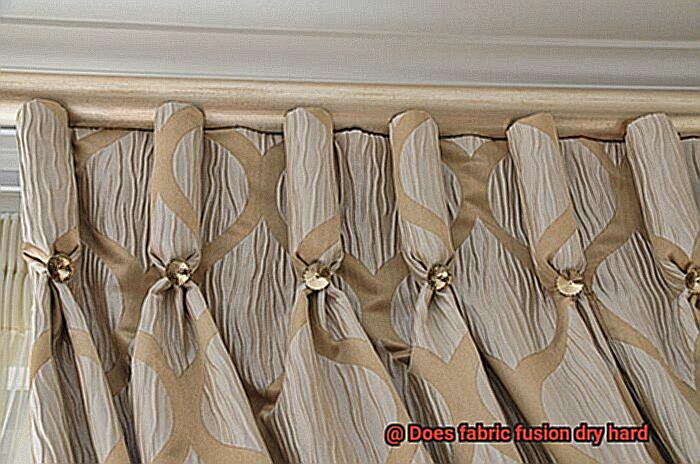
One more thing – consider the type of fabric you’re working with. Different fabrics may require different application techniques. Lightweight fabrics, for example, may need less adhesive to maintain their natural drape and avoid stiffness, while heavier fabrics might require a bit more for a secure bond. To be on the safe side, it’s always a good idea to test the adhesive on a small, inconspicuous area before going all in.
Excessive Glue Use and its Impact on Hardness
Whether you’re a seasoned fabric artist or a novice venturing into the world of creative expression, understanding how glue affects the hardness of your projects is crucial for achieving desired outcomes. Join us as we delve into the secrets behind glue application techniques and uncover the effects of excessive glue on project hardness.
The Barrier Effect:
Excessive glue creates a thick layer that hampers the natural movement of fabric. Instead of enjoying the softness and flexibility of your project, you may end up with a stiff and rigid texture. Imagine trying to fold or drape a fabric that feels like cardboard – not exactly the result we’re aiming for.
Cracks and Breaks:

When too much glue is applied, stress points are created, making your fabric fusion project vulnerable to cracking or breaking over time. Think of it as building a bridge – weak spots where the structure can’t flex are more likely to collapse. We certainly don’t want our beautiful creations to fall apart.
Prolonged Drying Time:
Excessive glue means excess moisture, resulting in longer drying times. This extended exposure to moisture can lead to a harder final texture as the glue penetrates deeper into the fabric fibers. Patience is indeed a virtue, but let’s not test it unnecessarily.

Appearance Matters:
We all desire flawless fabric fusion projects, don’t we? Unfortunately, excessive glue use can leave behind visible residue marks that are challenging to remove or disguise. These unsightly marks can tarnish an otherwise perfect creation, so let’s strive for that smooth and sleek finish.
Tips for Success:
- Follow proper guidelines for glue application: Apply a thin and even layer of glue onto the fabric, ensuring it covers the desired area without excessive pooling or dripping.
- Consider different fabric types: Delicate fabrics require extra care, so use less glue to maintain their flexibility. Thicker fabrics may require slightly more glue for secure bonding.
YlaoksuACO0″ >
Conclusion
In conclusion, fabric fusion is a game-changer when it comes to adhesive options for fabrics. Unlike its stiff and rigid counterparts, fabric fusion maintains the supple and flexible nature of the fabric even after it dries. It’s like a secret agent infiltrating the fibers of the fabric, creating an unbreakable bond that can withstand any stress or movement.
The flexibility of fabric fusion is not just a luxury, but a necessity for functional fabrics like activewear or stretchy materials. It allows the fabric to twist, turn, and stretch without causing any cracks or breakages in the adhesive. No more limitations on your movements or worries about your favorite piece falling apart at the seams.
But that’s not all. Fabric fusion also has another trick up its sleeve – it dries transparently. This means you can confidently use it on delicate or light-colored fabrics without leaving any unsightly marks or stains behind. It’s like magic.
Now, let’s address the elephant in the room – yes, fabric fusion does dry to a certain level of stiffness. However, this stiffness is so minimal that it won’t compromise the overall flexibility and softness of your beloved fabrics. Think of it as a necessary evil for securing a strong and durable bond between different materials.
To ensure optimal results with fabric fusion, there are a few factors to consider. First and foremost, follow the manufacturer’s instructions regarding drying time and application techniques. Different brands may have varying drying times, so don’t skip this crucial step.
Secondly, choose a reliable brand that has proven its worth in the adhesive world. Don’t settle for anything less than top-notch quality when it comes to your precious fabrics.
Lastly, if you’re working with specialized fabrics or have specific applications in mind, consider using specialized formulas tailored to those needs. Don’t be afraid to explore all the options available to you.
With precision application and careful consideration of these factors, you can achieve flawless and durable fabric fusion projects that retain their flexibility and softness. So, my friend, go forth with confidence, unleash your creativity, and let the magic of fabric fusion bring your visions to life.

